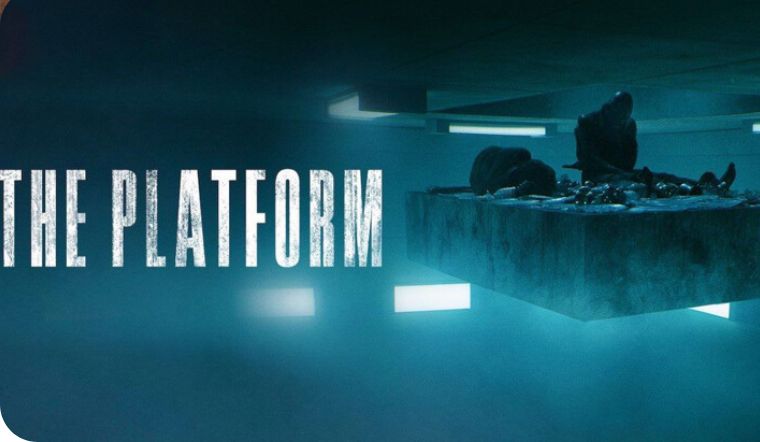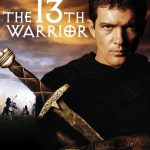The Platform (2019)
- fanmovies
- October 25, 2024

The Platform (2019) – Movie Review
The Platform (El Hoyo), directed by Galder Gaztelu-Urrutia, is a Spanish dystopian thriller that offers a chilling and thought-provoking commentary on class division, resource allocation, and human nature. Set within a mysterious, vertically stacked prison, the film delves into themes of survival, morality, and the devastating consequences of unchecked greed.
Plot Overview:
The story takes place in a strange prison structure known as “The Pit.” This facility consists of countless floors, with two inmates per level. At the top of the platform, a lavish feast is prepared, but as the platform descends through each level, the prisoners are left with increasingly limited resources, often reduced to scraps or nothing at all. The system is designed to create scarcity, forcing inmates to either cooperate or turn against each other in their struggle for survival.
The protagonist, Goreng (Iván Massagué), volunteers to enter the prison for six months to obtain a diploma. However, he soon realizes the brutality of the system when he wakes up on a lower level, where food barely reaches. Each month, the prisoners are reassigned to different levels at random, creating a fluctuating hierarchy of privilege and desperation. Goreng teams up with various characters throughout the film, including his cellmate Trimagasi (Zorion Eguileor) and a fellow prisoner, Imoguiri (Antonia San Juan), as they try to make sense of their surroundings and seek a way to escape.
Strengths:
- Unique Concept and World-Building: The vertical prison structure is a striking metaphor for social inequality and the distribution of resources. The film’s setting is minimal yet deeply effective in conveying the power dynamics between those at the top and those at the bottom.
- Social Commentary: The Platform is an allegory for class struggle, capitalism, and human greed. It raises profound questions about how much people are willing to take from others when they are placed in a system designed to enforce scarcity and inequality. The stark contrast between the opulent feast at the top and the starvation below serves as a powerful visual metaphor.
- Tense Atmosphere and Brutal Survivalism: The film builds tension through its claustrophobic setting, as well as the constant threat of violence between prisoners. The stakes are heightened by the randomness of the level assignments, making each day a life-or-death scenario. The desperation of the characters leads to shocking and brutal moments, underscoring the primal nature of survival.
- Performance of Iván Massagué: Goreng’s transformation throughout the film is gripping, as he goes from an idealistic man to someone pushed to his moral limits. Massagué’s portrayal of Goreng’s mental and physical descent is intense and powerful, making the character relatable and tragic.
Weaknesses:
- Ambiguous Ending: While some viewers may appreciate the open-ended conclusion, others might find it frustrating or unsatisfying. The film leaves many questions unanswered, which can feel like a lack of resolution for those who prefer clear-cut narratives.
- Graphic Violence and Disturbing Imagery: The Platform is not for the faint of heart. The graphic depiction of violence, cannibalism, and starvation may be too extreme for some audiences. While these elements serve the film’s larger message, they can be disturbing and overwhelming.
- Limited Character Development: Although the film’s concept and themes are compelling, the characters, aside from Goreng, can feel underdeveloped. Many of the supporting characters are there to serve symbolic roles, but they aren’t given enough depth to truly resonate on an emotional level.

Themes and Symbolism:
- Class and Resource Distribution: The most obvious theme of the film is the way wealth and resources are distributed unequally, with those at the top hoarding everything, while those at the bottom are left to fight over what little is left.
- Human Nature and Morality: The Platform explores the idea of what people are capable of when pushed to their limits. It raises questions about morality, altruism, and whether it’s possible to maintain one’s humanity in a system designed to encourage competition and cruelty.
- Hope vs. Despair: The ever-shifting levels of the platform represent hope and despair. One month, a prisoner might find themselves in a position of relative comfort, while the next, they could be thrust into abject starvation. This randomness mirrors the unpredictability of life and social mobility.
Verdict:
The Platform is a bleak, visceral exploration of human nature, inequality, and survival. With its stark setting and thought-provoking themes, the film is a hard-hitting allegory for class struggle and the consequences of societal imbalances. Its minimalistic yet powerful design, combined with a chilling atmosphere, make it a standout in the realm of dystopian thrillers. However, its graphic content and ambiguous storytelling may not be for everyone.











